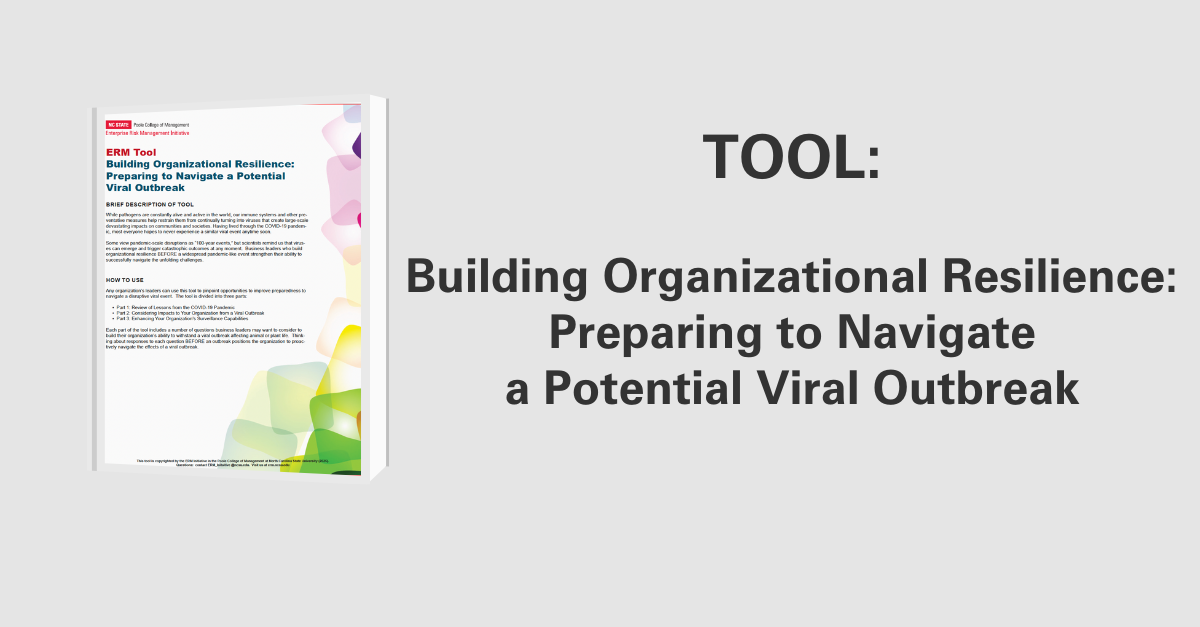Recognizing the Shamrock Organization and Emerging Risks It May Create
This article by Beth Ritter, associate professor of practice in the Poole College of Management at North Carolina State University, discusses emerging risks associated with different organizational types.
When you think about your organization’s workforce and its related talent needs, there are a number of dynamics to consider. We have all heard about the Millennials and we are beginning to learn about the group that follows them – often referred to as the iGeneration or the Homeland Generation – who bring different skills and expectations to the workforce. Organizations are experiencing the graying of their talent as the boomers are aging. Unprecedented advancements in technology, including the impact with artificial intelligence and digital transformation, are changing how organizations develop and deliver products or services. These developments along with record low unemployment are intensifying skill shortages. And a company named Uber has taught us about the new Gig economy. How will these trends impact the workforce structure for organizations, thereby introducing new types of emerging risks for executives and boards to consider?
Charles Handy, an Irish Management professor, predicts that organizations will soon resemble a Shamrock having either three or four leaves. Let me describe this to you.
The first leaf of the clover represents the core of your organization. These are full-time associates who maintain the heart of your organization’s existence or represent your entity’s core competency. At first, you may think of your management team as this leaf, and yes, they will be in the core. But, it is important for you to also think about the people in your organization who have key skills that you need all the time, all year long. Given emerging trends in the labor force, the size of this group will not match the size of your current full-time workforce. Rather, it is expected to be reduced to a third of the organization’s workforce. When you consider artificial intelligence and the jobs that will become obsolete this workforce reduction seems more plausible.
The second leaf consists of contractors, people who work occasionally with your firm and may also work with other firms. I recently spoke to a friend who was acting as COO for two separate firms and was looking for a third “gig” to round out his time and efforts. These contractors may have very unique skillsets that you only need periodically or skills that you can’t afford to have on a full-time basis. Also, consider the Network orchestrator model when you consider this contingent leaf. Network orchestrators work with peer firms to create value (products, services or innovations) and do not employ all the workers involved throughout the network.
The third leaf consists of those employees that are part-time. Handy described these as contingent employees or on-demand employees with no career track. It is possible that these may be our future phased retirees or millennials who want to work a reduced set of hours. Both of these stakeholders, the junior and senior staffers, want flexibility even if it is for different reasons.
Your firm may have a fourth leaf and that is where your consumer actually does some of your work. An example may be an application process where the consumer keys the application information instead of an employee. Digital transformation is impacting where work is done. Work that was historically done inside your firm by employees may now be completed differently, and in this case by the consumer, a non-employee.
Now, let’s consider the risks a Shamrock-style organization may face.
First to mind are the compliance risks associated with part-time and contractor employees. How do we enable these partners with data access or authority while not creating co-employment relationships?
Also, how do we protect our firms and the contingent people? Can we teach them to create or certify a high-quality product or service? Firms should re-consider compliance training methods and control points to ensure they are appropriate for “temps”.
A second risk to be considered is engagement and loyalty. How will organizations create loyalty when all of the traditional levers we have used to create loyalty do not apply to this contractor workforce? Loyalty has often come from the idea of stable employment, but if we subscribe to the Shamrock model where two-thirds of our workers will not have stable employment, what other levers do we have? If your job conditions do not endear workers to be loyal will they care about the company brand? Will they make decisions like owners? There may be risks to your firm’s culture and values if it does not consider ways to create loyalty for those less-than-full-time associates. Motivation is linked to empowering and significant work. So, job content will be a driver for engagement in this new model.
A third risk to consider is Knowledge Management. How will organizations protect their intellectual property with transient associates? Contract terms, rules and data access will need new definitions. How will firms transfer knowledge? Can firms afford to train high turnover talent or “train the street”? In contrast, can companies train too few and miss out on necessary skill competence? Consider that Millennials are eager to learn and appreciate opportunities for certifications or badges that acknowledge achievement. Formal mentoring programs with objectives, deadlines, and measures may be needed to transfer knowledge before boomers retire. Also, consider that the changing work may require re-training for your workforce, so underfunding your training efforts may be a risk.
As the talent and technology landscape change the way work gets completed, be sure your organization is considering shifting profiles of risks created by these emerging workforce dynamics. Recognizing these emerging risk challenges now may allow your organization to reduce risk and exploit the changes for strategic advantage.
Original Article Source: “Recognizing the Shamrock Organization and Emerging Risks It May Create”– Beth Ritter, NC State University ERM Initiative, January 2019
Beth Ritter is an Associate Professor of Practice in the Department of Management, Innovation, and Entrepreneurship in the Poole College of Management at North Carolina State University where she teaches and conducts research about human resources and talent management issues. Prior to joining NC State, Beth was a senior vice president of human resources at Burt’s Bees, which is now a part of Clorox.
- Categories:
- Types:


